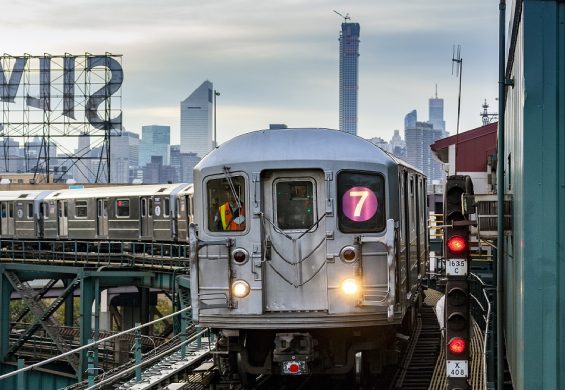
Oct. 3, 2017 By Nathaly Pesantez
The 7 train is one of four trains deemed the “worst offenders” for subway delays, with delays on this line costing the city between $13.7 million and $29 million annually, according to a recent report from the NYC Comptroller.
The Oct. 1 report breaks down subway lines based on weekday ridership, train schedules, and wait assessments, coming up with a cost analysis based on “best-case”, “mid-range”, and “worst-case” delay scenarios.
The annual economic cost of the 7 train in terms of “best-case” major delays is $13,685,550, based on the more than 117,000 weekday 7 line riders. “Mid-range” major delays on this line result in an annual cost of $18,793,342. The “worst-case” delays on the 7 line cost the city’s economy $29,009,935.

Estimated annual economic cost for first five subway lines
The analysis uses the midpoint of the range of wait time delays for minor and medium delays and three distinct scenarios for major delays, laying out estimates measured for trains 100 percent, 200 percent, and 400 percent behind schedule. An assumed average hourly salary of $34 per person is also used for calculations.
Trains delayed by 25 percent to 50 percent over their scheduled time are considered “minor”. “Medium” delays range from 50 percent to 100 percent over scheduled time, and “major” delays are those that run 100 percent over scheduled time.
The 7 train is one of five subway lines that most negatively impact economic activity, according to the report. The 5, 7, A, F, and 4 train lines combined cost the city $140 million annually assuming worst-case delays.
Overall, it is estimated that the economic cost of subway delays are up to $389 million annually.
“What these new numbers show is that the cost of inaction is greater than the cost of action; that subway delays take a massive toll on our economy,” said Comptroller Scott M. Stringer.
The report comes after a survey released in July conducted by the Comptroller’s office on the toll subway delays have on people, including arriving to work late, having to walk to work, and even getting fired from a job.
See the full report here .
One Comment

Fix those damn signals and knock down about 7 of those new high-rises in LIC!